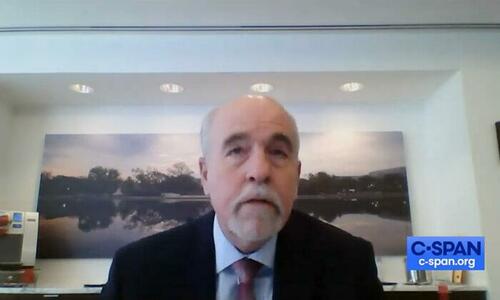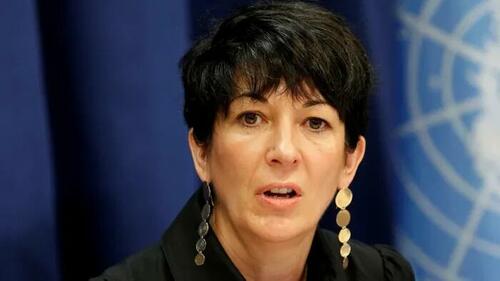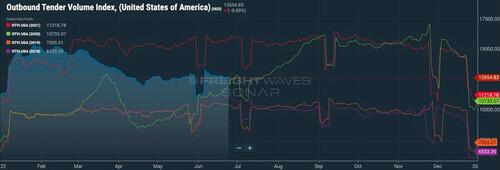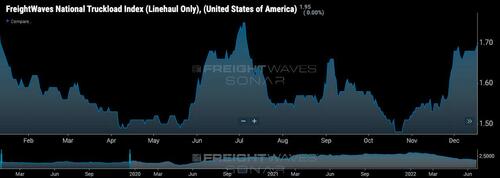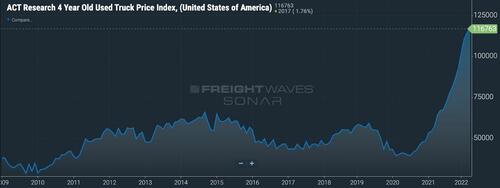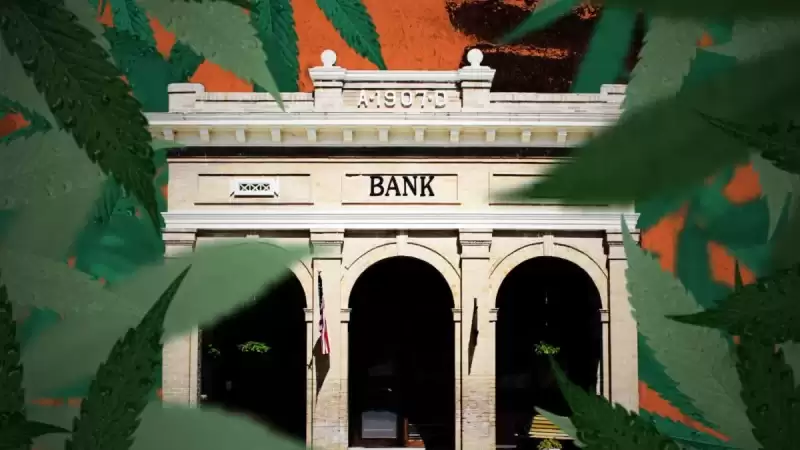By Michael Every of Rabobank
Abby Normal
Dr. Frankenstein: “Igor… May I speak to you for a moment?”
Igor: “Of course.”
Dr. Frankenstein: “Sit down, won’t you?”
Igor: “Thank you.”
Dr. Frankenstein: “No, no. Up here.”
Igor: “Thank you.”
Dr. Frankenstein: “Now, that brain that you gave me… was it Hans Delbruck’s?”
Igor: “No.”
Dr. Frankenstein: “Ah! Good. Would you mind telling me whose brain I did put in?”
Igor: “Then you won’t be angry?”
Dr. Frankenstein: “I will *not* be angry.”
Igor: “Abby someone.”
Dr. Frankenstein: “Abby someone… Abby who?”
Igor: “Abby Normal.”
Dr. Frankenstein: “Abby Normal…”
Igor: “I’m almost sure that was the name.”
Dr. Frankenstein: “Are you saying that I put an abnormal brain into a seven-and-a-half-foot long, gorilla? Is that what you’re telling me?”
Young Frankenstein (1974)
If one does not laugh, one cries at another (Abby) normal day in markets.
Normal, as we saw US 10-year yields rise 7bp back to 3.20% and oil rise around 2%.
Normal, as G7 chair Germany welcomed South Africa’s progress on its ‘Just Energy Transition Partnership’ as it implements ‘Stage 4’ rolling blackouts.
Normal, as Sri Lanka, already allowing civil servants four-day weeks to grow their own food, suspends fuel sales entirely except for emergency services.
Normal, as the US and EU released a joint statement on European Energy Security that talked of “important, necessary, and immediate steps” and recognized “the enormity of the challenge” – and then promised 1.5m “smart thermostats” for an economy with 445m people. The thermostats really don’t need to be smart. All of them will read “it’s freezing!” this winter. Indeed, yesterday’s Bloomberg article ‘Many Winters Are Coming. Start Saving Energy Now’ is worth quoting in detail:
“The European manufacturing sector is crumbling under the weight of sustained high electricity and natural gas prices. With little prospect of relief, another wave of curtailments and closures looms. And that’s before any rationing of natural gas, potentially later this year, in Germany in the event Russia reduces supply even further. In that scenario, many companies will have no choice but to shut down… The months-long crisis that many industrialists pencilled into their plans has morphed into a years-long problem. The prospect of bleeding cash for a few months, perhaps half a year, or even a year, was one thing; losing money indefinitely is another thing entirely.
For example, an aluminium smelter would lose about $200m annually at current forward prices for electricity and carbon dioxide for the next year. And that’s despite elevated prices for the metal in the markets. Aluminium may be an extreme example, but it’s evidence of the pressures faced by industrialists. In private, European executives say they’ll use the forthcoming quarterly reporting season in mid-July to announce more plant closures. The affected industries will be those with the most intensive energy use: fertilizer, base metals and steel, chemical, ceramic, glass and paper. But increasingly food production will be, too. Heated greenhouses and chicken farms face astronomical energy bills.”
Normal, as someone snarked on Twitter about smiling G7 leaders looking like a terrible boy-band, “It took 14 months to go from ‘Build Back Better’ to ‘There Will Be Food Shortages’”.
Normal, as CNN carries the story, ‘‘Give us a plan or give us someone to blame’: Inside a White House consumed by problems Biden can’t fix’, which says, “Instead of managing an economy in the midst of a natural rotation away from recovery and into a stable period of growth, economic officials are analyzing and modelling worst-case scenarios like what the shock of gas prices hitting $200 per barrel may mean for the economy.”
Normal, as the article quotes a Harvard professor who was economic advisor to President Obama claiming, “There’s no playbook for fixing the supply side of the economy. It’s not like in economic policy school they teach you here are the 12 things to do to rapidly fix the supply side in an economy.” Funny how China manages it, and the US/West used to before neoliberalism.
Normal, as the Dallas Fed survey includes the quotes such as:
- “As a country, we are not looking at the future and establishing relationships with emerging countries like we should to ease the dependency on Chinese products and services. This will hurt us in the long run.”
- “Everything we buy and sell comes and goes by truck, if we can get a truck at any price. Inflation will continue until the country is self-sufficient in oil and gas. The current political policy may not change until 2024. Therefore, inflation will be our consistent companion for a while, then stagflation!”
- “We’ll all be lucky to have a job with two more years of this disaster.”
- “You can’t ignore the economic fundamentals leading to a likely recession, and the administration is either stubborn or as paralyzed as a deer in headlights.”
Normal, as the US starts to ramp up rare earth production yet hears, “Now that Western governments are saying we need our own supply chains, you think China is just going to say, ‘Thanks for being a great customer for the last 30 years?’… No. They are going to fight to protect their market share.” Which one can apply to almost every product the US buys from them.
Normal, as the US continues to drain its strategic petroleum reserve, which is now at its lowest level since 1986, and yet energy prices remain sky high, as President Macron tells President Biden the UAE and Saudis cannot pump any more oil. Imagine if there were a major war and the US really needed that oil.
Normal, as Russia attacked a Ukrainian shopping centre, killing at least 13 people.
Normal, as NATO announced it will increase its rapid reaction forces on high readiness from 40,000 to 300,000. Now? In 10 years? Whose troops? Europe is long on pencil-pushers but short on people used to dealing the sharp end of anything else. This hugely expensive action suggests the alliance may be heeding rumours that Moscow may attack the Baltic states, a geopolitical development which could make what we have seen so far look like a sideshow for markets.
Normal, as NATO’s first strategy statement for a decade will apparently designate China as a “systemic challenge”, inflaming Beijing: yet that is still a compromise pushed by France and Germany, who insist on stressing a “willingness to work on areas of common interest”, and the Czechs and Hungarians won’t accept “strategic convergence” between China and Russia. Meanwhile, US China expert Matt Pottinger this week noted you cannot turn a great white shark into a bottle-nosed dolphin by treating it sweetly, and that even pre-Covid China refused to cooperate on disease-control efforts without the US making concessions on the South China Sea.
Normal, as China tried to set up a meeting with 10 Pacific Island leaders right before they hold their own meeting on 14 July, which, after Western pushback via the ‘Blue Pacific’ plan, seems far less likely to turn their vast maritime region ‘red’.
Normal, as The Hill carries another withering article asking, ‘Biden’s White House: Are we nearing ‘The Klain Mutiny’?’, noting, “The Biden administration is losing the short game when it comes to US national security, and President Biden’s upcoming July trip to the Middle East is yet another case study in how the White House keeps misfiring and setting the president up for failure. It would be one thing if the administration’s missteps were merely unforced errors, but they are not. They appear to be systemic in nature – they begin with chief of staff Ron Klain and extend to national security adviser Jake Sullivan, Secretary of State Antony Blinken, and Defence Secretary Lloyd Austin.”
It goes on to claim that Klain’s “glaring lack of substantive national security or foreign policy experience, either at a Cabinet or command level, is proving problematic… 17 months into Biden’s presidency, it is clear that Klain, Sullivan, Blinken, and Austin are incapable of prioritizing, let alone apolitically balancing, the two – with US national security (and Biden) paying an unacceptable price…. Biden must recognize he is now a war president and that he must make changes to his national security team to reflect this reality.”
Normal, as Twitter debates Hunter Biden having had his bank account frozen after trying to make payments to escorts with Russian accounts, related snark that “I yearn for simpler times, like when a President’s child secured Chinese trademarks for a business venture”, and a voicemail emerges of President Biden telling Hunter, “I think you’re clear,” regarding business dealings with a figure dubbed the ‘spy chief of China’ – almost none of which is worthy of mainstream media attention.
Normal, as most of the market endlessly wonders how long until we cut rates and re-start QE again, and this backdrop magically goes away: “Did you hear? We won the war because the Fed cut rates!”
It’s all Abby Normal: give me a sed-a-give until someone with real brains emerges.

